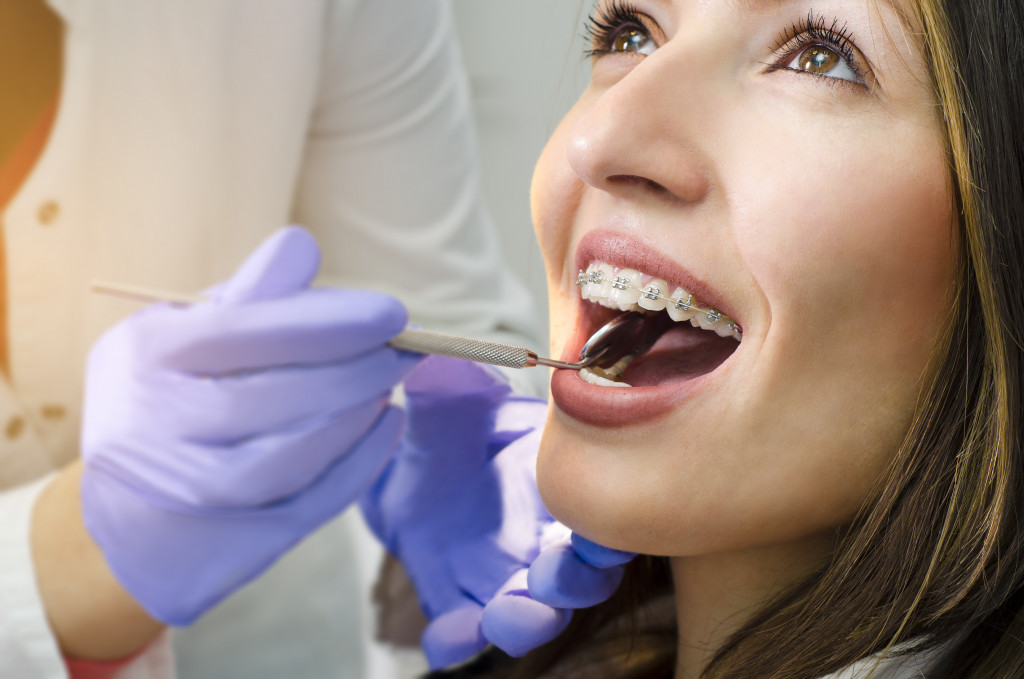Dental braces are the most common and traditional method for straightening teeth. Statistics show that approximately 4 million people wear braces in the United States alone. While braces are a proven way to achieve straighter, healthier smiles, they can be uncomfortable, require frequent visits to the orthodontist, and can take months or even years to complete.
Fortunately, there are now alternatives to dental braces that make it easier and more convenient for people who want to improve their smile without undergoing the hassle of traditional metal braces.
Invisalign
One of the most popular alternatives is Invisalign, which uses a series of customized clear plastic aligners instead of metal brackets and wires. The aligners are custom-made based on impressions of your teeth taken by your dentist or orthodontist. They are virtually invisible and can be easily removed for eating, drinking, and brushing. Invisalign works the same way as braces but is usually quicker, with many treatments taking just 9-12 months to complete.
The Invisalign aligners are changed every two weeks, gradually moving your teeth into a straighter position. You’ll need to wear the aligners for at least 22 hours daily to get the best results. The aligners should also be kept clean and free of any food or debris by brushing them with toothpaste daily.
Like traditional orthodontics, Invisalign requires regular check-ups with your dentist or orthodontist to monitor progress. These check-ups may include taking new impressions and X-rays of your mouth and changing the aligners when needed.
Lingual Braces
Another option is lingual braces, which are similar to traditional metal braces but are mounted to the front of your teeth instead of being attached to the back (tongue side) of your teeth. This makes them virtually invisible from the outside and allows you to smile without anyone noticing that you’re wearing braces. Since lingual braces require customization for every patient, treatment times vary but generally take about 12-18 months.
Lingual braces can correct the same orthodontic reasons as traditional braces, including overcrowding, spacing issues, misalignment, and overbite or underbite. However, lingual braces typically require more specialized care than traditional braces due to their placement on the back of the teeth. As a result, you must visit an experienced orthodontist when considering lingual braces.
Ceramic Braces

Ceramic braces are another option for straightening your teeth. They look similar to traditional metal braces but are much less visible since they use tooth-colored brackets and clear wires. They also use a lower force than traditional ones, making them more comfortable for some people.
Ceramic braces are a popular choice among adults who want to straighten their teeth without the look of traditional metal braces. The tooth-colored brackets and clear wires blend in with your natural tooth color and make them much less noticeable when you smile.
Unlike traditional braces, ceramic braces use a lower force when repositioning teeth. This makes them more comfortable than metal braces and can make treatment time shorter. They also require less maintenance than traditional braces since they won’t stain or corrode over time as metal brackets can.
When considering ceramic braces, it is essential to remember that they tend to be more expensive than traditional metal braces. Additionally, they may require elastic rubber bands to help move teeth into place, which can be uncomfortable and require more frequent visits with an orthodontist.
Spring Aligner System
The spring aligner system is a newer type of orthodontic treatment that uses a custom-made series of springs to gradually move the teeth into proper alignment without using metal brackets or wires. Each spring pushes on the tooth in small increments over several weeks before being replaced with a larger one until all the target teeth are in the desired position.
It is a much faster process than traditional braces, often taking 3-4 months to complete the treatment instead of 1-2 years. This system also helps reduce patient discomfort since it uses incremental force rather than large jolts, which can cause pain and pressure on the teeth. Furthermore, this aligner system allows for the adjustment of the springs, allowing for more personalized treatment.
The spring aligner system can correct various orthodontic issues, such as crowding, arch development, and spacing. It is also ideal for patients with mild misalignments since it requires less pressure than other systems, which can cause damage. The aligners are made from a transparent and comfortable material, making them almost invisible to the naked eye. Furthermore, they can be quickly taken out for brushing and eating, allowing the patient to maintain their oral hygiene routine.
In Closing
All in all, various alternatives to traditional metal braces are available to those seeking a dental correction. Each option offers unique benefits and drawbacks and should be evaluated before deciding. Ultimately, the best option depends on the patient’s budget, lifestyle preferences, aesthetic goals, and severity of the condition.





